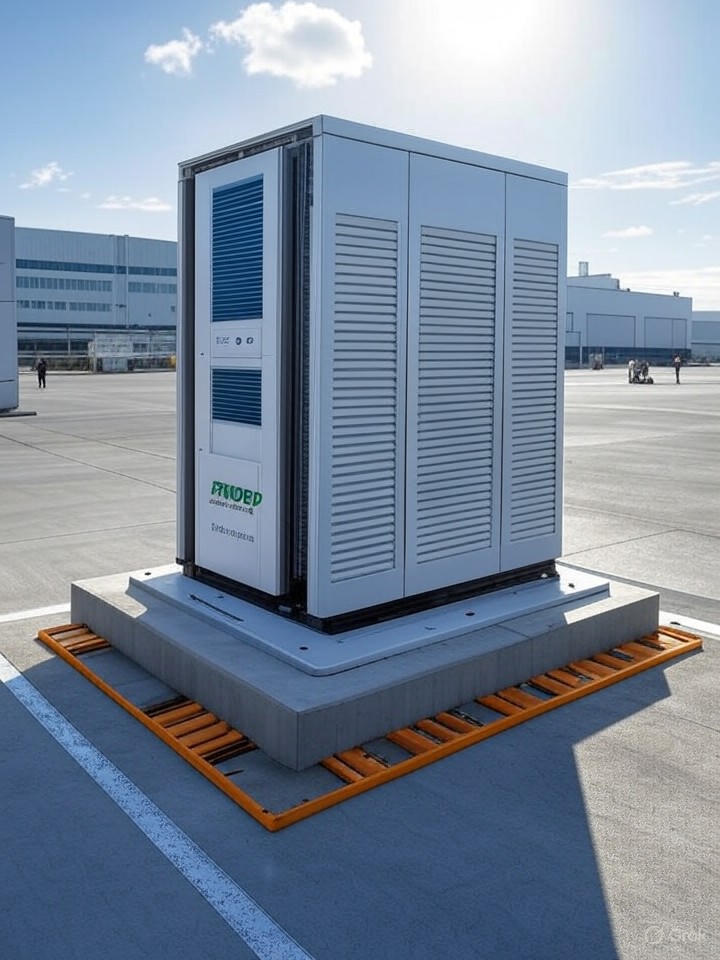In the evolving world of automotive sustainability, Toyota Motor Corp. has embarked on an innovative project that repurposes end-of-life electric vehicle batteries, turning potential waste into a valuable energy resource. At Mazda Motor Corp.’s sprawling manufacturing headquarters in Hiroshima, Japan, Toyota has installed a system that collects and reuses high-voltage batteries from various electrified vehicles, including hybrids and full EVs. This initiative not only addresses the growing challenge of battery disposal but also demonstrates a practical step toward circular economies in the auto sector.
The system, dubbed the Sweep Energy Storage System, integrates entire battery packs—complete with their original inverters—into a grid-stabilizing setup. By storing excess energy generated from renewable sources like solar panels at the plant, it acts as a buffer against power fluctuations, ensuring consistent supply for production lines. According to reports from The Drive, Toyota has been field-testing this technology since August 2025, collecting batteries from its own models as well as those from other brands to maximize efficiency and scale.
Innovative Repurposing Techniques
Engineers at Toyota have developed proprietary methods to assess and refurbish these batteries, ensuring they meet safety and performance standards for stationary use. This approach extends the lifecycle of lithium-ion packs that might otherwise be recycled for raw materials, a process that can be energy-intensive and environmentally taxing. Industry insiders note that such second-life applications could reduce the carbon footprint of battery production by up to 30%, based on lifecycle analyses.
Collaboration between Toyota and Mazda underscores a broader trend among Japanese automakers to share technologies for mutual benefit. Mazda’s Hiroshima plant, which produces models like the CX-5 and MX-5, now benefits from this energy storage, potentially cutting operational costs and enhancing resilience against Japan’s frequent power grid instabilities, exacerbated by natural disasters.
Broader Implications for the Industry
The project’s success hinges on advanced monitoring software that optimizes charge-discharge cycles, preventing degradation while integrating with the factory’s existing infrastructure. As detailed in coverage from Autoblog, the system uses batteries that have reached about 50-70% of their original capacity—still ample for non-motive purposes but insufficient for vehicle propulsion.
This initiative aligns with global regulatory pressures, such as the European Union’s battery recycling mandates, which require 95% material recovery by 2030. Toyota’s move could set a precedent for other manufacturers, potentially influencing supply chains worldwide. Experts suggest that scaling this technology might involve partnerships with energy providers, creating microgrids that support not just factories but entire communities.
Challenges and Future Prospects
However, challenges remain, including the logistics of battery collection and the need for standardized testing protocols across brands. Toyota is addressing these through its extensive dealer network, which facilitates the return of used packs. Insights from Drive highlight how the program revitalizes batteries from models like the Prius and RAV4 Hybrid, emphasizing economic viability.
Looking ahead, Toyota plans to expand the Sweep system to other facilities, potentially integrating AI for predictive energy management. This could accelerate the transition to net-zero operations, with Mazda reporting initial energy savings of 10-15% during tests. For industry leaders, this collaboration signals a shift toward sustainable manufacturing, where waste becomes a cornerstone of innovation, fostering resilience in an era of electrification.




 WebProNews is an iEntry Publication
WebProNews is an iEntry Publication